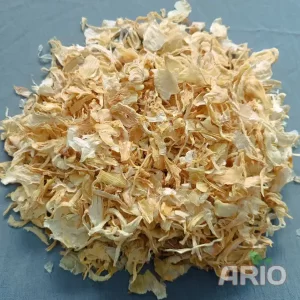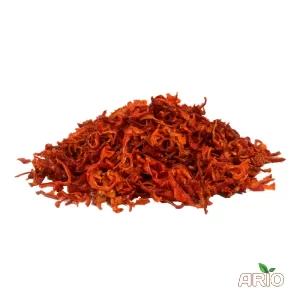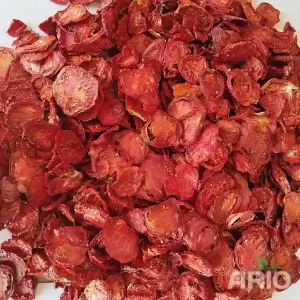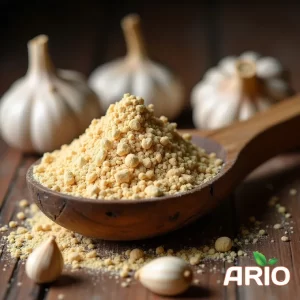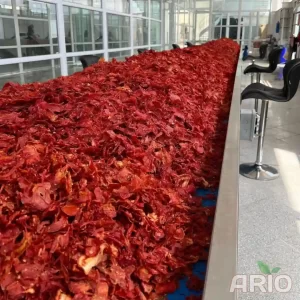Dried Vegetables

Dried vegetables are a smart, long-lasting alternative to fresh produce. By removing moisture while preserving flavor and nutrition, they become a practical choice for everyday cooking, food industries, and export markets. These products are categorized into various subtypes, each with its own distinct uses and benefits.
Popular Types of Dried Vegetables and Their Uses
Dried Tomato
Dried tomatoes are made by removing water from ripe tomatoes, intensifying their flavor and extending shelf life. In Iran, both traditional sun-drying and modern industrial methods are used. These tomatoes are widely exported to neighboring countries. They’re also staples in Mediterranean cuisine, especially in Italy and Turkey.
Click to view Dried tomatoes
Dried Paprika
Dried paprika brings vibrant color and sweet-spicy aroma to dishes. In Iran, it’s often produced in warmer provinces and is a great natural coloring and flavoring agent. Spain, Hungary, and China are also major producers, offering a range of flavor profiles from sweet to smoky.
Contact us for bulk orders of Dried paprika
Dried Onion
Dried onion, available in flakes or slices, is perfect for reducing prep time without sacrificing taste. Iran is a significant onion producer, and much of the fresh harvest is dried and exported. Other major producers include India and Egypt.
Discover our export Dried onion
Garlic Powder
Garlic powder is made from dehydrated and ground garlic cloves. It’s a flavorful and convenient seasoning for everyday cooking. Iran has a rich tradition in garlic farming, and modern processing facilities have enabled industrial-level production. China, however, dominates the global garlic powder market.
view more: Garlic powder
Onion Powder
Made by grinding dried onions into a fine powder, this product is widely used in snacks, sauces, and spice mixes. It’s a common item in Iranian kitchens and food industries, as well as in India and the Middle East.
Click to view: dried onions
Tomato Powder
Tomato powder offers a deep red color and intense tomato flavor—great for sauces, soups, and ready-made meals. Iran, with its high-quality tomatoes, is well-positioned for producing tomato powder at scale. The U.S. and China also have strong tomato powder production for both local use and export
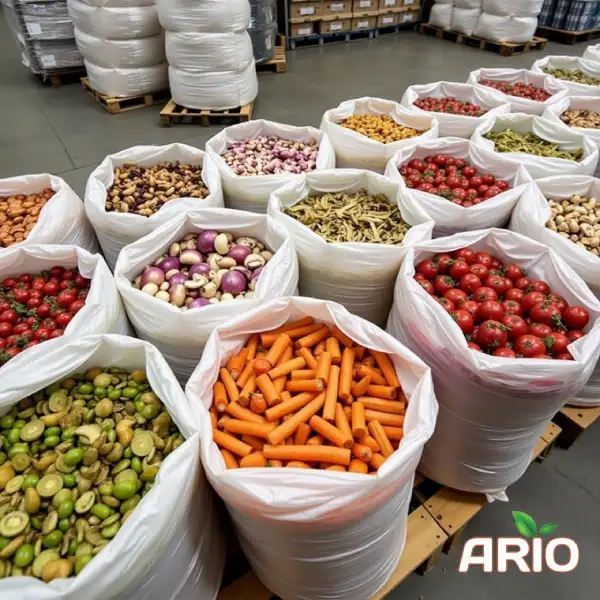
Dried Vegetable Production in Iran
Iran’s diverse climate and rich agricultural output make it ideal for dried vegetable production. Provinces like Fars, Khorasan, Isfahan, and Kerman house processing plants that use both traditional and high-tech drying methods. Many of these products are exported to Gulf countries, Iraq, and Russia, thanks to growing demand for natural and long-lasting food ingredients.
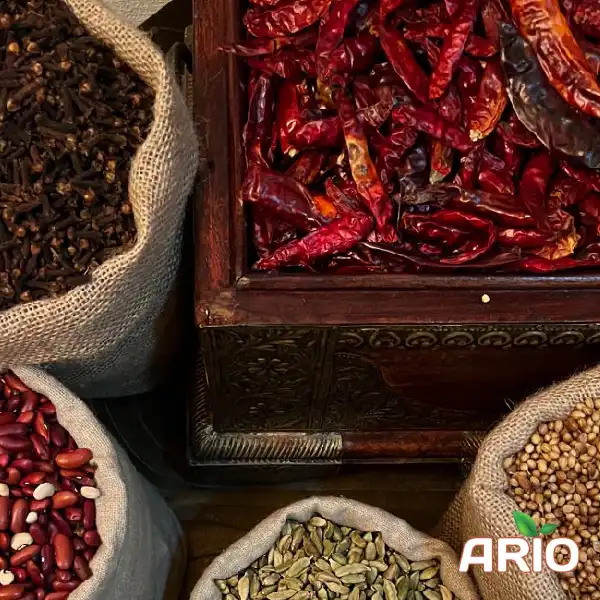
Top Producing Countries
| Product | Leading Producers |
|---|---|
| Garlic Powder | China, India, Iran |
| Dried Onion | India, Egypt, Iran |
| Dried Tomato | Italy, Turkey, Iran |
| Dried Paprika | Spain, Hungary, Iran |
How Dried Vegetable Production Differs in Iran vs. Other Countries
Dried vegetable production in Iran often blends traditional methods like sun drying with more modern industrial techniques, depending on the region and scale. Unlike countries such as China or the U.S., where large-scale automation and freeze-drying technologies dominate, many Iranian producers still rely on seasonal cycles and local labor.
This allows for more artisanal, flavorful products but may result in less standardization. However, recent investments in food processing infrastructure are helping Iranian manufacturers close the gap and improve consistency, hygiene, and export readiness.
Iran’s Export Market for Dried Vegetables
Iran has become a competitive exporter of dried vegetables, particularly to neighboring markets like Iraq, the UAE, and Russia. Products such as dried onion, garlic powder, and tomato powder are in high demand due to their quality and affordability. Iran’s strategic location and lower production costs provide an edge in regional trade, and government support for agricultural exports continues to boost capacity.
As global demand for natural and shelf-stable food ingredients grows, Iranian dried vegetables are finding increasing opportunities in Asia and Eastern Europe.
Frequently Asked Questions – Dried Vegetable
1. Does Iran have the capacity to export dried vegetables?
Yes, Iran has strong agricultural resources and climate diversity, making it highly capable of producing and exporting a wide range of dried vegetables.
2. Which countries are the main importers of Iranian dried vegetables?
Key markets include Iraq, Afghanistan, the UAE, Russia, and countries in Central Asia.
3. What certifications are required to export dried vegetables from Iran?
Health and safety certificates, standard compliance documents, phytosanitary permits, and in some cases organic certification are needed for export.
4. Which Iranian dried vegetables are in highest global demand?
Garlic powder, dried onion, tomato powder, and dried paprika are among the most in-demand due to their strong flavor and competitive pricing.
5. What methods help increase the shelf life of dried vegetables?
Controlled industrial drying, vacuum packaging, and moisture-absorbing materials help extend product shelf life.
6. Can Iranian dried vegetables compete in the European market?
Yes, provided the products meet EU quality, hygiene, and packaging standards, they can be competitive in European markets.
7. What kind of packaging is recommended for export?
Vacuum-sealed, resealable, and moisture-resistant packaging with bilingual labeling (Farsi and English) is considered export-standard.
8. What factors influence the pricing of export-grade dried vegetables?
Product quality, packaging type, shipping costs, currency exchange rates, and customs duties all play a role in price determination.
9. What are the advantages of industrial production over traditional drying methods for export?
Industrial processing ensures hygiene, consistent quality, scalability, and easier compliance with export regulations.
10. How can exporters find international buyers for dried vegetables?
Through international trade fairs, B2B platforms (like Alibaba or TradeKey), digital marketing, and partnerships with export agencies or brokers.
Showing all 6 results

